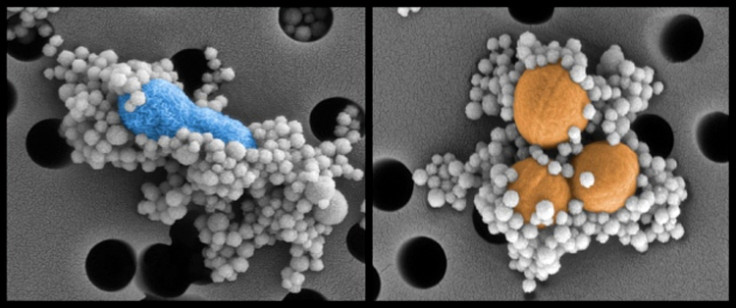Artificial Spleen Removes Ebola, HIV Viruses and Toxins From Blood Using Magnets

Harvard scientists have invented a new artificial spleen that is able to clear toxins, fungi and deadly pathogens such as Ebola from human blood, which could potentially save millions of lives.
Blood can be infected by many different types of organ infections as well as contaminated medical instruments such as IV lines and catheters.
When antibiotics are used to kill them, dying viruses release toxins in the blood that begin to multiply quickly, causing sepsis, a life-threatening condition whereby the immune system overreacts, causing blood clotting, organ damage and inflammation.
It can take days to identify which pathogen is responsible for infecting the blood but most of the time, the cause is not identified, while the onset of sepsis can be hours to days. Broad-spectrum antibiotics with sometimes devastating side effects are used and currently over eight million people die from the condition worldwide annually.
"Even with the best current treatments, sepsis patients are dying in intensive care units at least 30% of the time," said Dr Mike Super, senior staff scientist at Harvard's Wyss Institute for Biologically Inspired Engineering, which led the research. "We need a new approach."
Using magnetic nanobeads to clean blood

To overcome this, researchers have invented a "biospleen", a device similar to a dialysis machine that makes use of magnetic nanobeads measuring 128 nanometres in diameter (one-five hundredths the width of a single human hair) coated with mannose-binding lectin (MBL), a type of genetically engineered human blood protein.
The study, An Extracorporeal Blood-Cleansing Device For Sepsis Therapy, has been published in the journal Nature Medicine.
The MBL on the nanobeads binds itself to toxins and pathogens, which can then be pulled out of the blood by the device through two hollow channels connected by a series of slits, with one channel containing flowing blood, while the other contains a saline solution that collects and removes the pathogens that travel through the slits.
The scientists tested their device by cleaning human blood that had been spiked with different pathogens and when blood flowed through a single device at the rate of 500ml to 1 litre an hour, over 90% of key pathogens were removed.
To speed up the device for human use, many devices can be linked together to clean the blood at a faster rate.
The researchers also tested the bio-spleen on rats that had been infected by toxins and viruses such as E. coli and S. aureus. After just five hours of filtering, 90% of the toxins and pathogens had been removed from the rats' bloodstreams and 90% of the treated rats survived.
Cleaning blood without knowing the source
"Sepsis is a major medical threat, which is increasing because of antibiotic resistance," said Donald Ingber, a professor of vascular biology at Harvard Medical School and the Vascular Biology Program at Boston Children's Hospital, as well as professor of bioengineering at SEAS.
"We're excited by the biospleen because it potentially provides a way to treat patients quickly without having to wait days to identify the source of infection and it works equally well with antibiotic-resistant organisms.
"We hope to move this towards human testing to advancing to large animal studies as quickly as possible."
Biospleens could be used in the future to treat patients suffering from viral diseases such as HIV and Ebola, where a person's survival depends on how quickly the amount of virus in the blood can be lowered to a negligible level.
The researchers plan to use pigs next to test their invention.
© Copyright IBTimes 2025. All rights reserved.






















